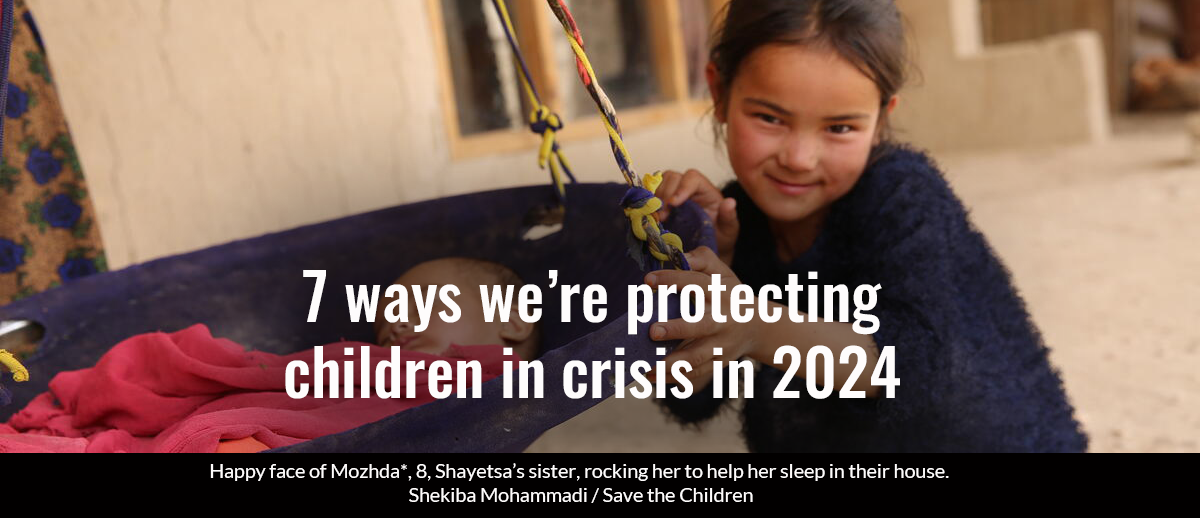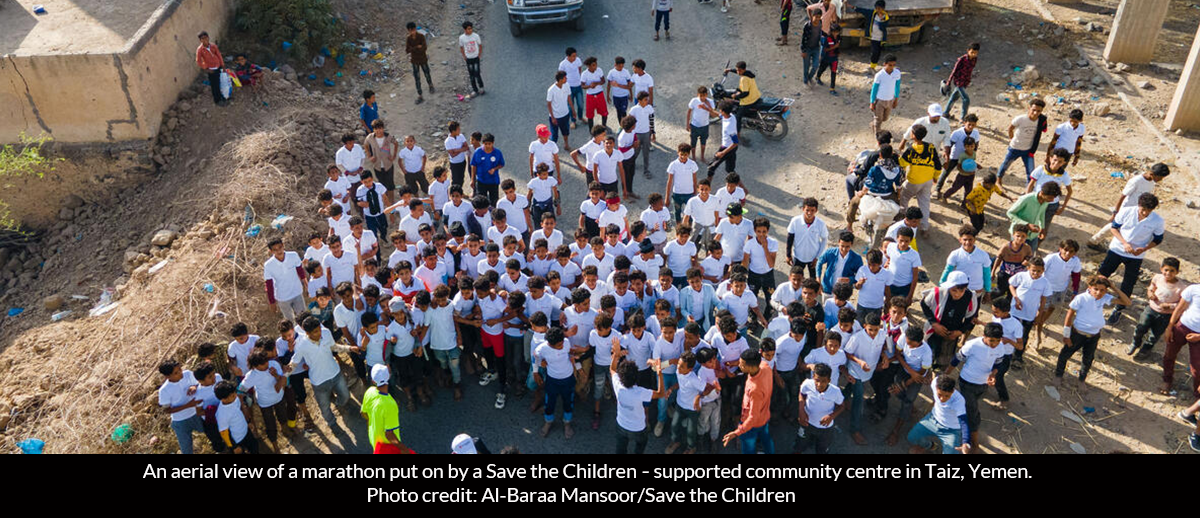
Conflict, extreme climate events and global economic shocks are intensifying at an alarming rate, plunging children worldwide into crisis.
Ongoing violence in Gaza, Ukraine, Sudan, the Democratic Republic of Congo, Haiti and many other countries is robbing children’s lives and futures. Around 1 in 5 children live in or are fleeing from war and conflict. That’s 1 child in every 5 who may have lost their home, their school, a regular meal, a sense of safety or even their parents or friends. That’s a lot to lose for anyone, let alone a child.
At the same time, climate catastrophes in every corner of the world are destroying homes and livelihoods. Rising costs and widespread inequality is leaving millions facing hunger, abuse and exploitation.
These huge challenges for children call for a robust response – and we’re ready for it.

In 2024, it’s estimated that nearly 300 million people, including millions of children, will need urgent support.
Partnering with local experts, Save the Children is committed to standing by children and doing whatever it takes to provide this critical support.
Our crisis and disaster work is targeted, practical and life-changing. In 2024, we’ll continue to support children living in the most dangerous places, and facing the toughest challenges to ensure that every child is able to survive, stay safe and keep learning.
Save the Children is there before, during and after a crisis.
Donate now and help us prepare better, respond faster and protect longer.
Here are 7 ways we’ll help children living in crisis in 2024.

1. Anticipating crises
We look out for early warning signs that would indicate that a crisis is approaching to make sure communities are ready when they hit. By doing this, we can reduce the impact of disasters on children, their families and their communities. It means we can provide more timely and cost-effective support.
For example, we’re monitoring the impacts of El Niño, preparing communities to withstand the sudden weather changes that come with it, by reinforcing homes and schools with sandbags ahead of predicted flooding, providing families with cash, farmers with drought-resistant crops, or vaccinating children against likely diseases.
Flexible funding is essential for acting ahead of crises. It allows us to respond faster and protect longer in the face of humanitarian crises. It means we can release money as soon as early warning signs are identified and take action before it is too late.
Help protect children’s lives and futures.
Your donation could help support children wherever they need our help most across the world.

2. Learning from local experts
It’s the people nearest who can get there fastest – and who know best, too. So, we depend on the expertise of local and national organizations to provide essential support to children.
This includes things such as protecting children’s rights, getting them back to learning as soon as possible, and giving them a sense of normality when disaster strikes.
This also includes working with local doctors, nurses and other medical professionals to provide life-saving treatment for children suffering from deadly conditions, such as severe acute malnutrition and cholera.
We work side by side with local experts, professionals and organizations, supporting where needed. We make sure they’re actively involved in designing and implementing a response, and that they have the funds and supplies they need to support children and their families.
With their expertise and access and our guidance and resources, together, we understand the needs and strengths of a community, long before during and after a disaster strikes.

3. Amplifying children’s voices
Children are our most valued experts. We rely on their voices, insights and lived experiences to help us understand the support they need, the challenges they face and the changes they want to see. We will amplify their voices by giving children and young people a space to make their voices heard.
For example, we have done this with young climate change activists, bringing them to global climate talks like COP28 and the UN General Assembly so that they can speak directly to world leaders about the devastating impact that the climate crisis is having on them.
By involving children in events like these, we can make sure that policies that affect children’s lives are shaped by their experiences.

4. Championing inclusion
We know that crises heighten inequalities faced by people in certain countries. This is why we pay particular attention to these groups, ensuring that everything we do actively addresses the many forms of discrimination people face. This includes race, ethnicity, gender identity, age, sexual orientation, disability, having a low income, nationality, and many others.
For example, we provide sanitary products for girls and women so they can continue to participate in school or work and set up safe spaces exclusively for girls in culturally sensitive contexts.
In Afghanistan, we run community-based education classes, specifically tailored for visual and hearing-impaired children. While in Yemen, we’ve covered the medical expenses of children who have lost limbs to landmines and provided tailored one-to-one support to help them recover, including help to get them back to school.

5. Prioritizing the protection of children
We continue to champion child protection in everything we do. This means safeguarding children from violence, neglect, exploitation and abuse. We provide mental health and psychosocial support, set up safe spaces for children to play and recover, and help trace and reunite children who have been separated from their families.
Our work doesn’t end there. We also strengthen national child protection services while reminding the international community of their duty to protect children at all times. This year we will make sure child protection is central to every area of our work and the work of our partners. It’s only through our collective action that we can make sure children are safe, whatever the crisis.
Help protect children’s lives and futures.
Your donation could help support children wherever they need our help most across the world.

6. Guided by evidence
For more than 100 years, we have helped to ensure that the world’s most vulnerable children survive, learn and are protected. Over the years we have learned a lot. We’ll keep learning from the work we’re doing and share knowledge to improve disaster responses in the future.
We will also work to fill research gaps, particularly around taking pre-emptive action, locally-led coordination and leadership, and the benefits of holistic, integrated support for children.

7. Sustainable solutions
When supporting people through disasters, we will be doing more to minimize the environmental impact of that work. We will also continue to work with communities to build their resilience to the impacts of climate change. This overlaps with the anticipatory work we do, which can include things such as providing training on agricultural practices that are climate-resistant.
For example, in the Solomon Islands, where families are on the frontline of the climate crisis, we’re working with a local NGO to restore protective ecosystems like mangroves and help families diversify their income away from farming. This includes training a group of women and young people to keep bees.
—
We can only meet the challenges that 2024 brings through collaboration.
By partnering with local experts, including children themselves, and with support from our global partners, donors and supporters, we can reach millions of children over the coming year.
Together, we can make sure that however dangerous the crisis is, children will find safety, refuge and space to be children again.
In 2024, we aim to assist approximately 27.4 million people, including 15.9 million children, across 46 countries.
Save the Children is there before, during and after a crisis. Join us and help protect children’s lives and futures.

By giving to Save the Children today, you can help protect a child’s life and future.
Your donation could help meet the immediate needs of children when disaster strikes, while also tackling the systemic issues putting them in danger.
Give today and help us prepare better, respond faster, and protect longer.












